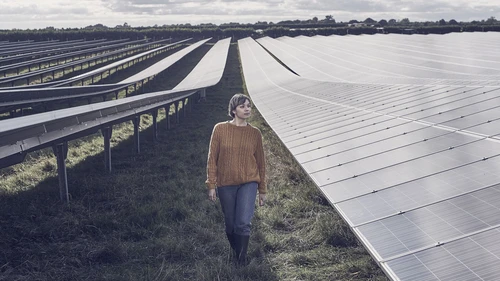
Fraud
Rise in investment scams
Investment scams are on the rise in the Nordics, especially in Finland where the number of cases has increased dramatically over the last months.
Read more
Fraud
Investment scams are on the rise in the Nordics, especially in Finland where the number of cases has increased dramatically over the last months.
Read more
Insights
Ola Ehrstedt had an idea and quit his job to pursue it. The idea was simple – happy IT consultants do a better job. That’s not enough, said the banks. All except Nordea, who recognised the potential.
Read more
Sustainability
Nordea’s Large Corporates & Institutions unit continues to invest in building the ESG expertise and skills of staff to help accelerate the transition. A new modular sustainability training programme allows employees to tailor the curriculum to their specific needs and roles.
Read more
Nordea On Your Mind
The Nordea On Your Mind team returns to a favourite topic: financial targets. They examine how companies’ approach to targets has changed in the aftermath of a global pandemic and amid turbulence from rising geopolitical tension, inflation and interest rates.
Read more
Economic Outlook
Norges Bank has hiked its policy rate faster and warned of a higher interest rate peak than previ-ously. We think the policy rate will peak in September at 4.25%, but we are not sure it will stop there. The interest rate market is now discounting rate cuts next year. In our view, interest rates will not start to gradually move lower until 2025.
Read more
Economic Outlook
Economic activity in Norway has flattened, and unemployment has risen slightly but is still at a very low level. Higher price and wage growth and a weaker NOK have led to a steeper interest rate increase. Households and the housing market have started to feel the pinch of the rate hikes.
Read more
Economic Outlook
The Danish economy has been on a remarkable growth journey, which has boosted employment to the highest level ever. The current account surplus has risen sharply, and public finances have been positive for six years running. However, signs of an impending slowdown are starting to show.
Read more
Economic Outlook
So far, the global economy has been very resilient to the significant monetary policy tightening. Inflation is still high, however, and there is a good chance monetary policy will need to be tightened further.
Read more
Economic Outlook
A cold wind is still blowing through the Swedish economy. Tight monetary policy will likely gradually impact the domestic economy and Sweden’s important trading partners. Some relief is expected once inflation falls and policy rates are lowered.
Read more
Economic Outlook
Finland’s investments in the green transition continue, with more money pouring into low-emission industrial production and electric transportation, in addition to wind power.
Read more
Economic Outlook
The labour market in Sweden has been more resilient than expected, but several signs now indicate that the situation will worsen. There is reason to believe that the deterioration of the labour market will be relatively mild, but a weaker labour market will heighten uncertainties.
Read more
Economic Outlook
Economic growth was healthy in the first half of the year, but the outlook going forward is clearly weaker. Higher interest rates will continue to put pressure on consumers, and residential construction. Demand for exports has also deteriorated as global economic growth has slowed down.
Read more